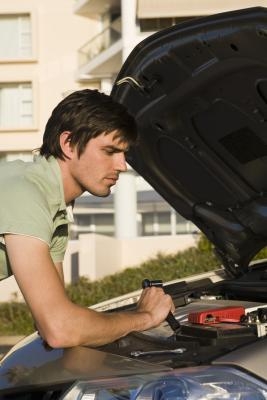
Many times, a failing catalytic converter is only detected when the vehicle fails an emissions test. However, problems with the catalytic converter can reduce your car's gas mileage, slow its acceleration or prevent it from even starting. Instead of paying a mechanic to check your engine's catalytic converter, you can test its performance at home and save money.
Use an OBD-II scan tool if your vehicle was built after 1996. Cars manufactured after this date are equipped with an electronic on-board diagnostic system that will display specific codes when a part fails. Most major auto parts stores will give you a free OBD-II reading if you do not have your own scan tool. Consult your owner's manual for the error codes relating to your make and model. Generally, codes P0420 through P0434 relate to failures in the catalytic converter and exhaust system.
Connect a vacuum gauge to the intake manifold's vacuum port. The vacuum port is a small plug that sticks out of the manifold. The location of the port varies by manufacturer, so check your owner's manual for more specific information. Ask an assistant to start the vehicle and idle the engine. Write down the vacuum pressure reading while the engine idles. Ask your assistant to rev the engine at 2,500 rpm. Watch the pressure reading as he does this. The pressure should initially drop, then return to the same level as when the engine was idling. If the vacuum pressure remains low, the catalytic converter is probably defective.
Raise the car with a jack and use jack stands to support its weight while you work. Look under the car and locate the catalytic converter between the muffler and the exhaust pipe. Disconnect the converter from the exhaust system and inspect its shell. Replace the catalytic converter if you notice any cracks, holes or corrosion. Shine a flashlight through one end of the converter as you look through the other end. If you cannot see the light, the converter is too clogged to use on your vehicle.